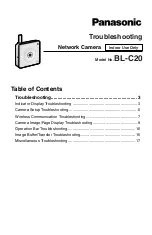
xStack DES-3500 Series Layer 2 Stackable Fast Ethernet Managed Switch User Manual
149
Safeguard Engine
Periodically, malicious hosts on the network will attack the Switch by utilizing packet flooding (ARP Storm) or other methods.
These attacks may increase the Safeguard Engine beyond its capability. To alleviate this problem, the Safeguard Engine function
was added to the Switch’s software.
The Safeguard Engine can help the overall operability of the Switch by minimizing the workload of the Switch while the attack is
ongoing, thus making it capable to forward essential packets over its network in a limited bandwidth. When the Switch either (a)
receives too many packets to process or (b) exerts too much memory, it will enter an
Exhausted
mode. When in this mode, the
Switch will drop all ARP and IP broadcast packets for a calculated time interval. Every five seconds, the Switch will check to see
if there are too many packets flooding the Switch. If the threshold has been crossed, the Switch will initially stop all ingress ARP
and IP broadcast packets for five seconds. After another five-second checking interval arrives, the Switch will again check the
ingress flow of packets. If the flooding has stopped, the Switch will again begin accepting all packets. Yet, if the checking shows
that there continues to be too many packets flooding the Switch, it will stop accepting all ARP and IP broadcast packets for double
the time of the previous stop period. This doubling of time for stopping ingress ARP and IP broadcast packets will continue until
the maximum time has been reached, which is 320 seconds and every stop from this point until a return to normal ingress flow
would be 320 seconds. For a better understanding, examine the following example of the Safeguard Engine.
Figure 7- 40. Safeguard Engine example
For every consecutive checking interval that reveals a packet flooding issue, the Switch will double the time it will discard ingress
ARP and IP broadcast packets. In the example above, the Switch doubled the time for dropping ARP and IP broadcast packets
when consecutive flooding issues were detected at 5 second intervals. (First stop = 5 seconds, second stop = 10 seconds, third stop
= 20 seconds) Once the flooding is no longer detected, the wait period for dropping ARP and IP broadcast packets will return to 5
seconds and the process will resume.
Once in Exhausted mode, the packet flow will decrease by half of the level that caused the Switch to enter Exhausted mode. After
the packet flow has stabilized, the rate will initially increase by 25% and then return to a normal packet flow.
To configure the Safeguard Engine for the Switch, click
Security > Safeguard Engine >
which will open the following window.
















































